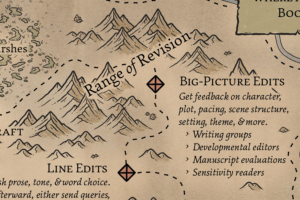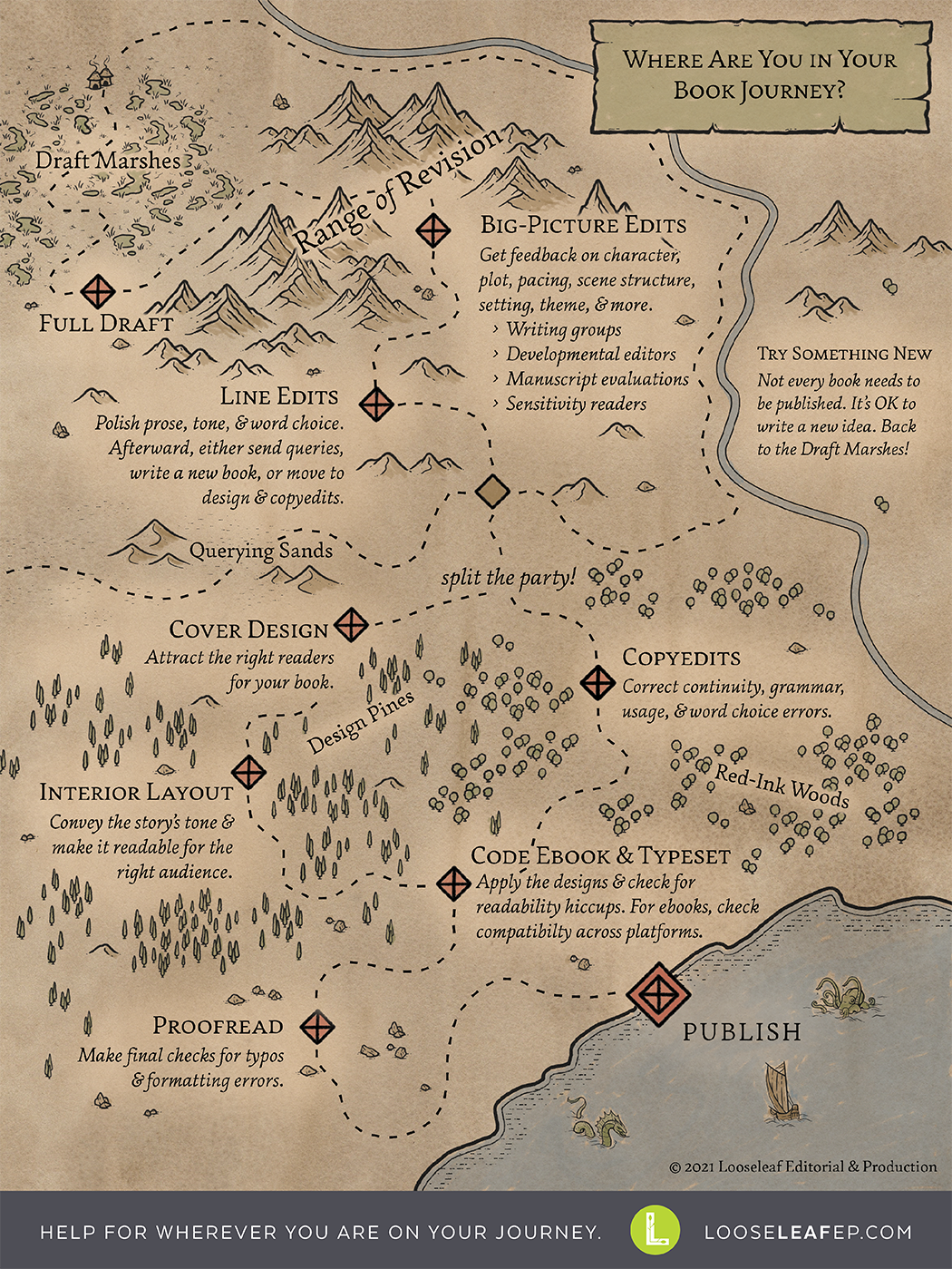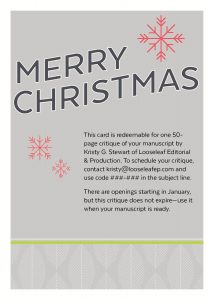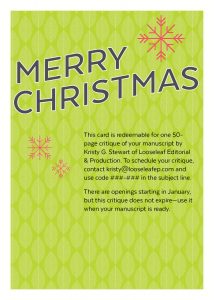Before you hire an editor, it’s important to have some foundational knowledge about the process. Here are five key bits of intel to get you started.
1. There Are Different Types of Editing
Many writers get to a stage where someone tells them to hire an editor (or comes to that decision on their own). But it’s important to know there is more than one type of editing, and those types usually need to happen in separate passes (and sometimes with different editors). Editing for character and pacing is difficult to do if you’re also correcting commas and hyphenation. [Read more…] about What You Need to Know Before Hiring an Editor
 Revising a manuscript is a journey through rough terrain. There are so many mountains to climb—character, plot, pacing, setting—and so many different ways to get through it all. That’s why the Range of Revision covers a big chunk of Looseleaf’s
Revising a manuscript is a journey through rough terrain. There are so many mountains to climb—character, plot, pacing, setting—and so many different ways to get through it all. That’s why the Range of Revision covers a big chunk of Looseleaf’s 







